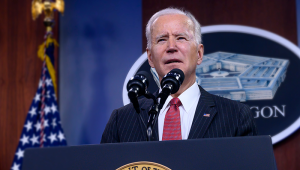The Republican tax framework, which Trump described as “the largest tax cut in [the] country’s history”, includes a larger zero tax bracket, lower tax rates for individuals, lower small-business tax rates and lower corporate tax rates, the Trump administration announced on 27 September.
“The current tax system is a colossal barrier standing in the way of America’s economic comeback… We’re going to remove that barrier to create the tax system our people finally, finally, finally, want and deserve,” Trump said.
“Our country and our economy cannot take off like they should unless we dramatically reform America’s outdated, complex and extremely burdensome tax code”.
Under the new framework, which Trump said will cut taxes for “the everyday, hardworking Americans”, the first $12,000 of income earned by an individual will be tax free, and taxable income will be subject to three tax rates: 12%, 25% and 35%. Child tax credits were also expanded.
The plan would also lower the corporate tax from 35% to 20%.
The tax reform framework aims to double the standard deduction, eliminate loopholes for the wealthy, create jobs and promote competitiveness through low corporate tax rates, and “bring profits back home”.
It does not detail what tax benefits might be eliminated to pay for the costs of the new tax cuts.
Democrats have criticised the framework as too beneficial for the wealthy and the changes are expected hit poorer households, especially single parents with children. The Democrat leader in the Senate, Chuck Schumer, told the BBC the cuts would increase the deficit.
The Trump administration had pledged to achieve tax reforms before the end of August next year. Earlier this year, Trump also proposed cuts to foreign aid spending in his budget for the 2018 fiscal year.
“We are going to cut taxes for middle class, make the tax code simpler and more fair for everyday Americans, and we are going to bring back the jobs and wealth that have left our country – and most people thought left our country for good,” Trump said.







